C++第四十三篇 -- VS2017创建控制台程序勾选MFC类库
用VS2017创建EXE带MFC类库方法
1. File --> New --> Project

2. Windows桌面向导
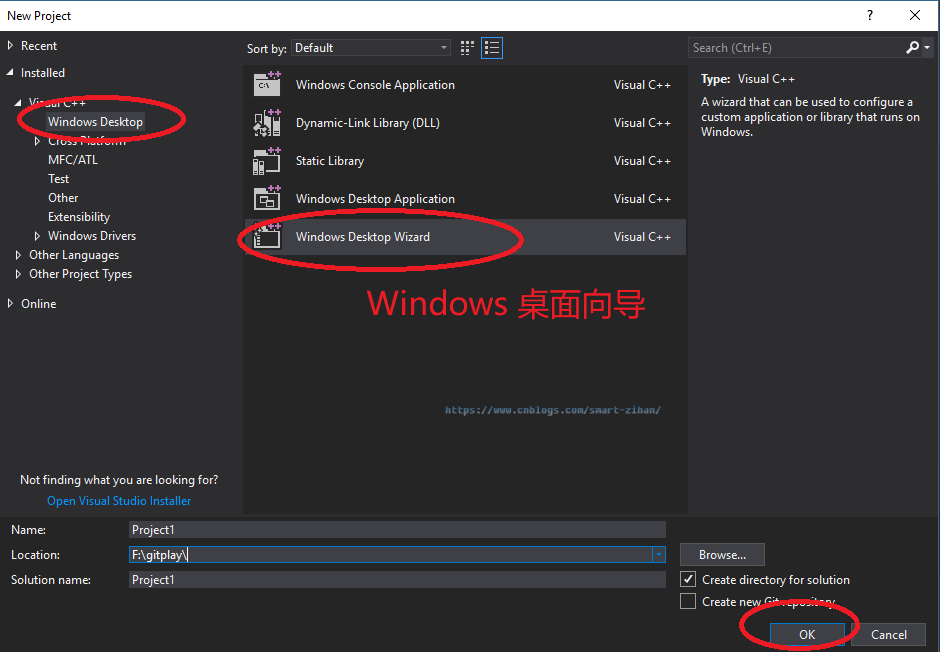
3. 勾选MFC类库
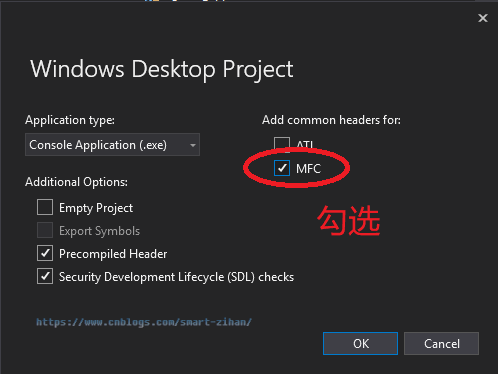
4. 创建成功
如果项目编译出错
1. 项目创建成功后编译报错界面

原因分析:缺少#include <afxwin.h>头文件。
解决方案:在#include "Project1.h"后面添加#include <afxwin.h>,编译通过。
如果上述方法不行,可参考下面解决方法,否则跳过以下内容。
原因分析:对比别人创建成功的项目,发现多了一个#include "framework.h"
解决方案:copy成功项目的framework.h头文件,并#include "framework.h",另外framework.h头文件中引用了targetver.h头文件,因此,将targetver.h头文件也copy过来
2. 编译成功后的界面

3. framework.h

#pragma once #include "targetver.h" #include <stdio.h> #include <tchar.h> #define _ATL_CSTRING_EXPLICIT_CONSTRUCTORS // 部分 CString 构造函数将是显式的 #define _AFX_NO_MFC_CONTROLS_IN_DIALOGS // 移除对话框中的 MFC 控件支持 #ifndef VC_EXTRALEAN #define VC_EXTRALEAN // 从 Windows 头文件中排除极少使用的内容 #endif #include <afx.h> #include <afxwin.h> // MFC 核心组件和标准组件 #include <afxext.h> // MFC 扩展 #ifndef _AFX_NO_OLE_SUPPORT #include <afxdtctl.h> // MFC 对 Internet Explorer 4 公共控件的支持 #endif #ifndef _AFX_NO_AFXCMN_SUPPORT #include <afxcmn.h> // MFC 对 Windows 公共控件的支持 #endif // _AFX_NO_AFXCMN_SUPPORT #include <iostream>
4. targetver.h

#pragma once // // 包含 SDKDDKVer.h 可定义可用的最高版本的 Windows 平台。 // 如果希望为之前的 Windows 平台构建应用程序,在包含 SDKDDKVer.h 之前请先包含 WinSDKVer.h 并 // 将 _WIN32_WINNT 宏设置为想要支持的平台。 #include <SDKDDKVer.h>
这样就不会编译出错了。
EXE调用MFC窗口
1. 新建一个子窗口
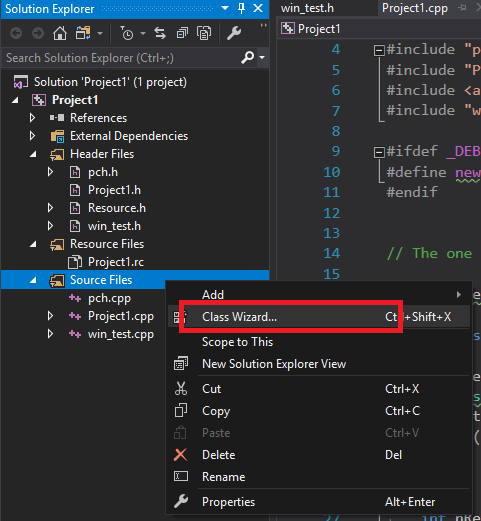

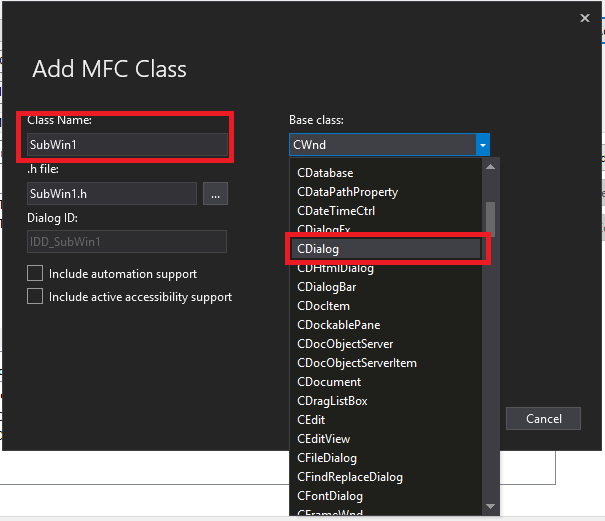
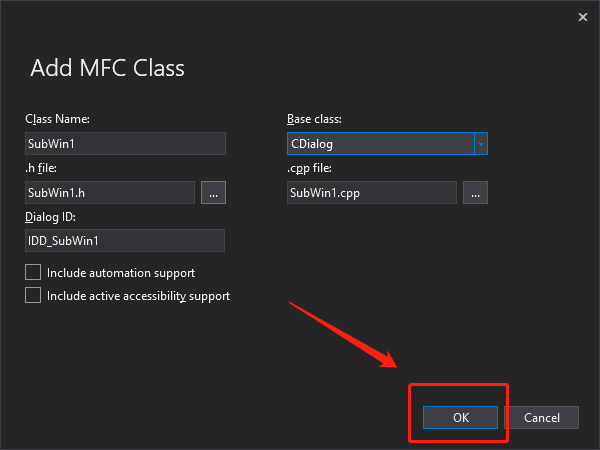
2. 修改SubWin1.cpp中#include "stdafx.h"为#include "pch.h"并且注释掉#include "Project1.h",然后添加#include "resource.h"如下

3. 在Project1.cpp中添加#include "SubWin1.h",然后用以下语句调用SubWin窗口
SubWin1 *chartdialog = new SubWin1; int ReturnValue = chartdialog->DoModal(); // Show the dialog printf("%d\n", ReturnValue);
Project1.cpp

// Project1.cpp : This file contains the 'main' function. Program execution begins and ends there. // #include "pch.h" #include "Project1.h" #include <afxwin.h> #include "win_test.h" #include "SubWin1.h" #ifdef _DEBUG #define new DEBUG_NEW #endif // The one and only application object CWinApp theApp; using namespace std; void win_test_show() { //win_test *chartdialog = new win_test; //int ReturnValue = chartdialog->DoModal(); // Show the dialog //printf("%d\n", ReturnValue); SubWin1 *chartdialog = new SubWin1; int ReturnValue = chartdialog->DoModal(); // Show the dialog printf("%d\n", ReturnValue); } int call() { int nRetCode = 0; HMODULE hModule = ::GetModuleHandle(nullptr); if (hModule != nullptr) { // initialize MFC and print and error on failure if (!AfxWinInit(hModule, nullptr, ::GetCommandLine(), 0)) { // TODO: code your application's behavior here. wprintf(L"Fatal Error: MFC initialization failed\n"); nRetCode = 1; } else { // TODO: code your application's behavior here. win_test_show(); } } else { // TODO: change error code to suit your needs wprintf(L"Fatal Error: GetModuleHandle failed\n"); nRetCode = 1; } return nRetCode; } int main() { int nRetCode = 0; call(); return nRetCode; }
可以看到窗口已经成功调用了

创建DLL带MFC类库方法
1. 新建一个Windows Desktop Wizard项目
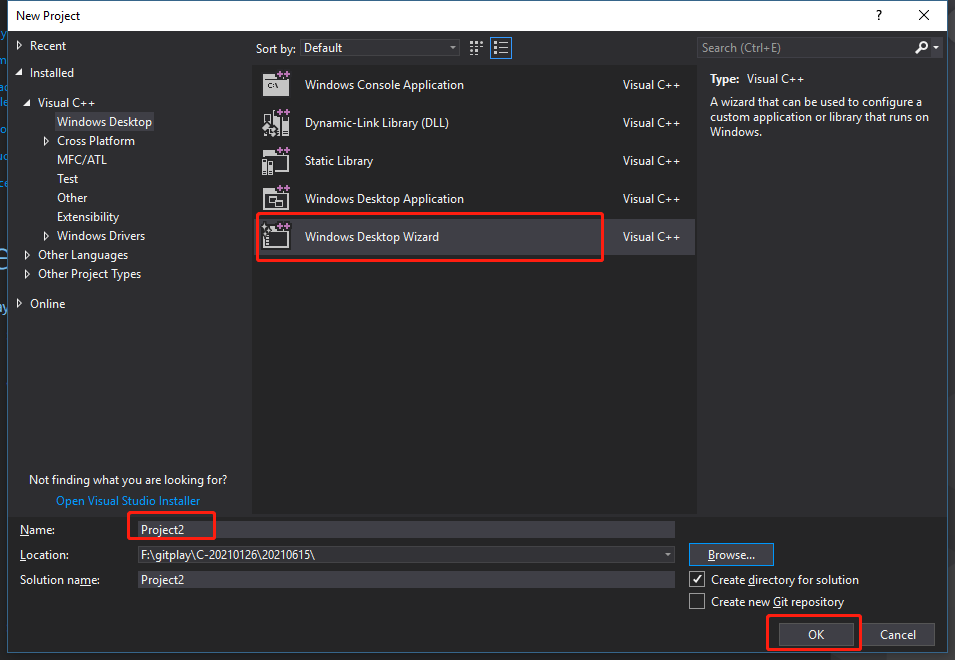
2. 勾选MFC,新建DLL
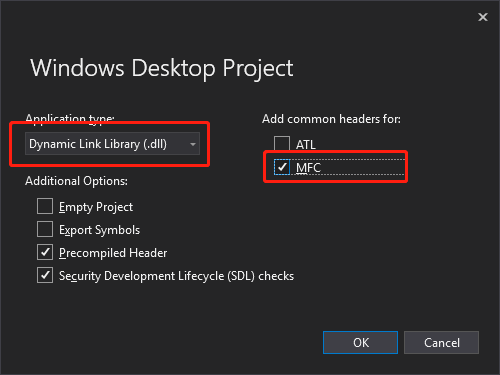
3. 编译程序,编译成功。
4. 新建一个Win32程序用来测试Dll
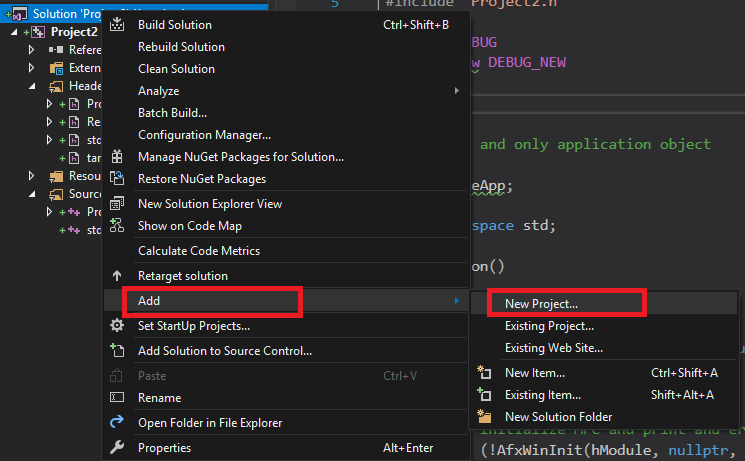

5. 在Dll中新建一个MFC的窗口
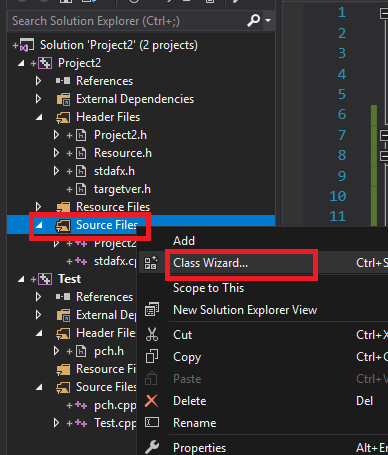

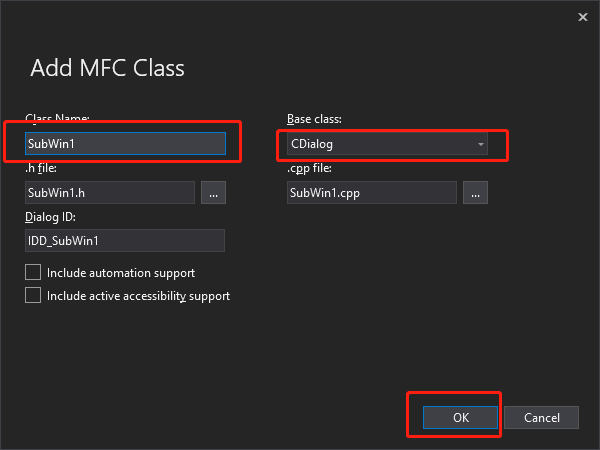
6. Project2.cpp中调用它,修改Project.cpp如下

// Project2.cpp : Defines the exported functions for the DLL application. // #include "stdafx.h" #include "Project2.h" #include "SubWin1.h" #ifdef _DEBUG #define new DEBUG_NEW #endif // The one and only application object CWinApp theApp; using namespace std; int Function() { int nRetCode = 0; HMODULE hModule = ::GetModuleHandle(nullptr); if (hModule != nullptr) { // initialize MFC and print and error on failure if (!AfxWinInit(hModule, nullptr, ::GetCommandLine(), 0)) { // TODO: code your application's behavior here. wprintf(L"Fatal Error: MFC initialization failed\n"); nRetCode = 1; } else { // TODO: code your application's behavior here. SubWin1 *chartdialog = new SubWin1; int ReturnValue = chartdialog->DoModal(); // Show the dialog printf("%d\n", ReturnValue); } } else { // TODO: change error code to suit your needs wprintf(L"Fatal Error: GetModuleHandle failed\n"); nRetCode = 1; } return nRetCode; }
7. 修改Project.h如下

// The following ifdef block is the standard way of creating macros which make exporting // from a DLL simpler. All files within this DLL are compiled with the {0}_EXPORTS // symbol defined on the command line. This symbol should not be defined on any project // that uses this DLL. This way any other project whose source files include this file see // {0}_API functions as being imported from a DLL, whereas this DLL sees symbols // defined with this macro as being exported. #ifdef __cplusplus extern "C" { #endif #ifdef PROJECT2_EXPORTS #define PROJECT2_API __declspec(dllexport) #else #define PROJECT2_API __declspec(dllimport) #endif // This class is exported from the dllxiu PROJECT2_API int Function(); #ifdef __cplusplus } #endif
8. 将SubWin1.cpp中添加头文件#include "resource.h"

// SubWin1.cpp : implementation file // #include "stdafx.h" #include "Project2.h" #include "SubWin1.h" #include "afxdialogex.h" #include "resource.h" // SubWin1 dialog IMPLEMENT_DYNAMIC(SubWin1, CDialog) SubWin1::SubWin1(CWnd* pParent /*=nullptr*/) : CDialog(IDD_SubWin1, pParent) { } SubWin1::~SubWin1() { } void SubWin1::DoDataExchange(CDataExchange* pDX) { CDialog::DoDataExchange(pDX); } BEGIN_MESSAGE_MAP(SubWin1, CDialog) END_MESSAGE_MAP() // SubWin1 message handlers
9. 编辑Test.cpp调用dll,本次采用的是静态加载DLL的方法,具体操作方法可以看前文。

// Test.cpp : This file contains the 'main' function. Program execution begins and ends there. // #include "pch.h" #include <iostream> #include "../Project2/Project2.h" int main() { std::cout << "Hello World!\n"; Function(); } // Run program: Ctrl + F5 or Debug > Start Without Debugging menu // Debug program: F5 or Debug > Start Debugging menu // Tips for Getting Started: // 1. Use the Solution Explorer window to add/manage files // 2. Use the Team Explorer window to connect to source control // 3. Use the Output window to see build output and other messages // 4. Use the Error List window to view errors // 5. Go to Project > Add New Item to create new code files, or Project > Add Existing Item to add existing code files to the project // 6. In the future, to open this project again, go to File > Open > Project and select the .sln file
10. 执行结果如下

chartdialog->DoModal()的返回结果居然是-1,这里就是DLL调用MFC类和EXE调用MFC类的区别所在了。解决这个问题的关键就是要在调用窗口语句之前加上AFX_MANAGE_STATE(AfxGetStaticModuleState());这句话。
Project2.cpp
// Project2.cpp : Defines the exported functions for the DLL application. // #include "stdafx.h" #include "Project2.h" #include "SubWin1.h" #ifdef _DEBUG #define new DEBUG_NEW #endif // The one and only application object CWinApp theApp; using namespace std; int Function() { int nRetCode = 0; HMODULE hModule = ::GetModuleHandle(nullptr); if (hModule != nullptr) { // initialize MFC and print and error on failure if (!AfxWinInit(hModule, nullptr, ::GetCommandLine(), 0)) { // TODO: code your application's behavior here. wprintf(L"Fatal Error: MFC initialization failed\n"); nRetCode = 1; } else { // TODO: code your application's behavior here. AFX_MANAGE_STATE(AfxGetStaticModuleState()); SubWin1 *chartdialog = new SubWin1; int ReturnValue = chartdialog->DoModal(); // Show the dialog printf("%d\n", ReturnValue); } } else { // TODO: change error code to suit your needs wprintf(L"Fatal Error: GetModuleHandle failed\n"); nRetCode = 1; } return nRetCode; }
这样就可以成功的在DLL中调出窗口。






